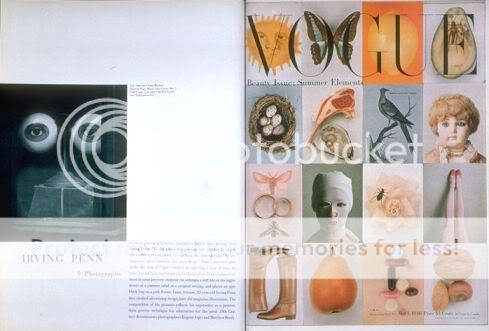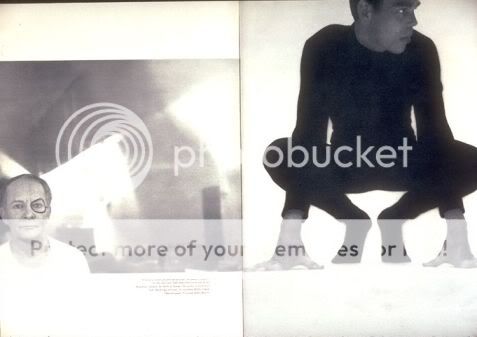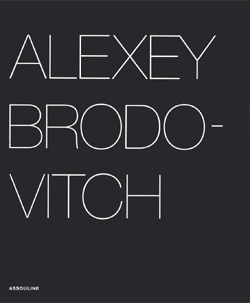kimair
frozen
- Joined
- May 8, 2003
- Messages
- 14,463
- Reaction score
- 1
from communication arts magazine:
cover from 1956

from April 1951 issue of Bazaar

Bazaar, November 1935

His contribution to contemporary magazine design while art director of Harper’s Bazaar would be sufficient enough to honor Alexey Brodovitch as a pioneer in graphic design, but his influence was much greater. He was one of the first to introduce European modernism of the 1920s to the United States both by his own work and by commissioning art and photography from leading European artists and photographers, including A.M. Cassandre, Salvador Dali, Henri Cartier-Bresson and Man Ray. Through his lifelong dedication to teaching, he created a generation of designers who shared his belief in visual vitality and immediacy. Fascinated with photography, he fostered an expressionistic approach that became the dominant photographic style of the 1950s.
Born in Russia in 1898, Brodovitch fled the Bolsheviks in 1920 with his family and future wife and settled in Paris. Brodovitch’s design career flourished in 1924 after his poster design for Le Bal Banal, a benefit dance for poor artists, was selected over many other artists including Pablo Picasso. Soon he was in great demand, designing fabric, jewelry, restaurant décor, posters and department store advertisements.
Invited to the United States in 1930 to start an advertising art department at the Philadelphia Museum School of Industrial Art, Brodovitch began his teaching career while completing numerous freelance assignments. In 1934, Carmel Snow, the new editor of Harper’s Bazaar, saw his design work and immediately hired him to be its art director. It was the beginning of a 24-year tenure that would revolutionize both fashion and magazine design.
By the 1950s, Brodovitch had perfected his style of combining text and photography with copious amounts of white space. Despite his easily recognizable work, Brodovitch did not formulate a theory of design. “There is no recipe for good layout,” he said. “What must be maintained is a feeling of change and contrast. A layout man should be simple with good photographs. He should perform acrobatics when the pictures are bad.”
Henry Wolf, Brodovitch’s successor at Harper’s Bazaar, commented on his unique approach to magazine layout. “Oh, of course he was a good designer and superb typographer and had an innate sense of elegance about space,” Wolf said. “But his layouts were done only as approximations. He stood in the middle of the room and, with a scissor, cut out photostats which he taped to a piece of paper. Others later straightened them. It was communicating an idea, a mood, a criticism that he was precise and masterful.”
Besides his achievements at Bazaar, Brodovitch’s legacy as a publication designer included the influential but short-lived Portfolio. Only three issues were published in 1950 and 1951. An innovative quarterly aimed at the design profession, Portfolio contained vividly illustrated features on Alexander Calder, Charles Eames, Paul Rand, Saul Steinberg and others. It also contained the work of pioneering photographers, many of whom were Brodovitch’s students. As art editor, Brodovitch helped determine the magazine’s contents, and created its distinct design with the help of elaborate devices such as die-cuts, transparent pages and multi-page foldouts. Those three issues are considered by many to be the pinnacle of Brodovitch’s design.
He continued to teach throughout his career. His Design Laboratory, which he began in 1941 at the New School for Social Research in New York, focused on illustration, graphic design and photography. As a teacher, Brodovitch was considered harsh in his criticism but inspiring, and his student list reads like a who’s who of visual communication, including photographers Irving Penn, Richard Avedon, Art Kane and Hiro, and art directors Bob Gage, Helmut Krone and Steve Frankfurt.
Today Brodovitch’s layouts continue to inspire with their energetic vitality and immediacy. His dedication to education directly influenced a generation of visual communicators and indirectly everyone else. Irving Penn said, “All designers, all photographers, all art directors, whether they know it or not, are students of Alexey Brodovitch.”
Phaidon Press has published a new monograph of Brodovitch’s work, which includes interviews with colleagues and never-before-published archival material (www.phaidon.com).
—Patrick Coyne
cover from 1956

from April 1951 issue of Bazaar

Bazaar, November 1935



















